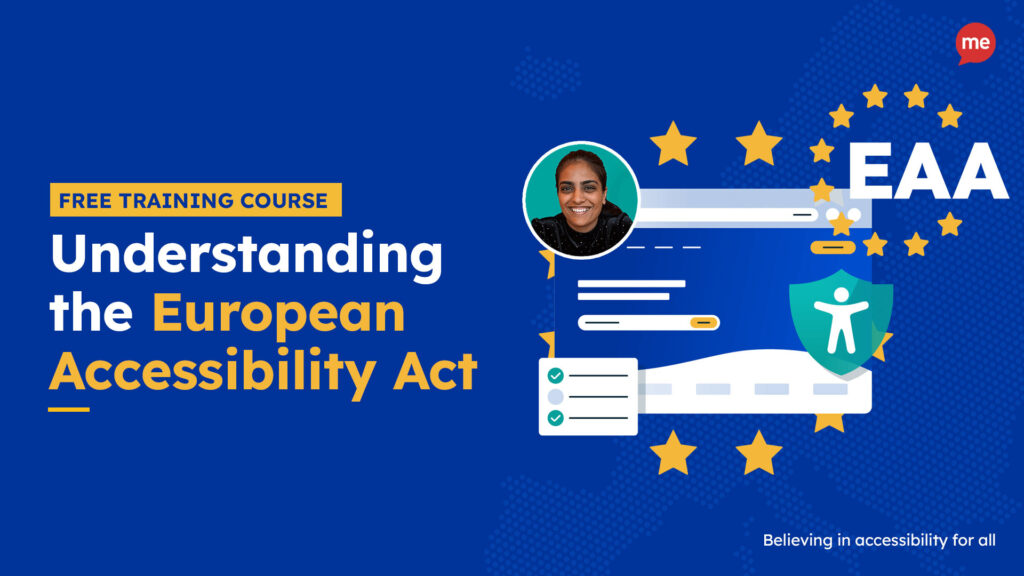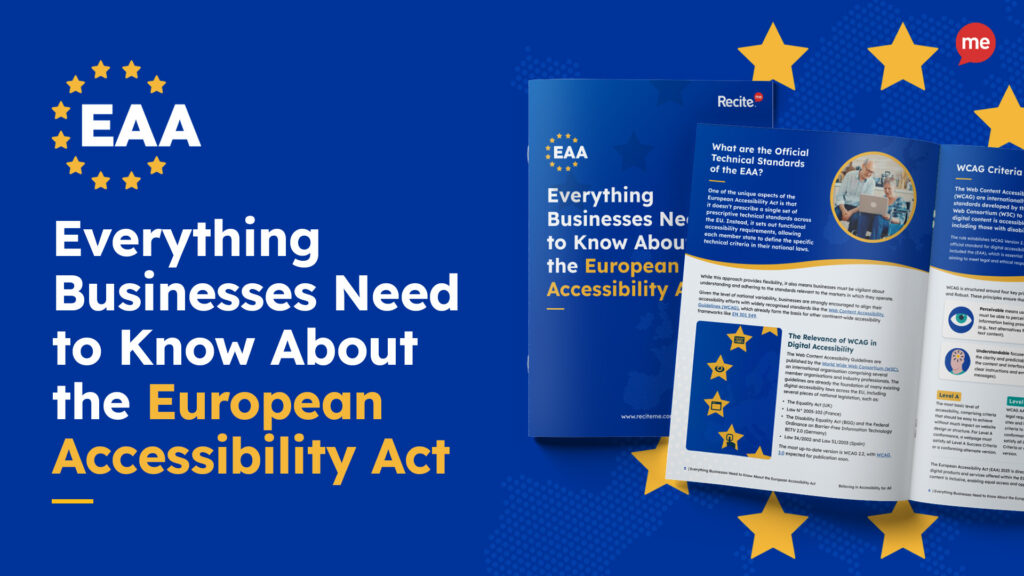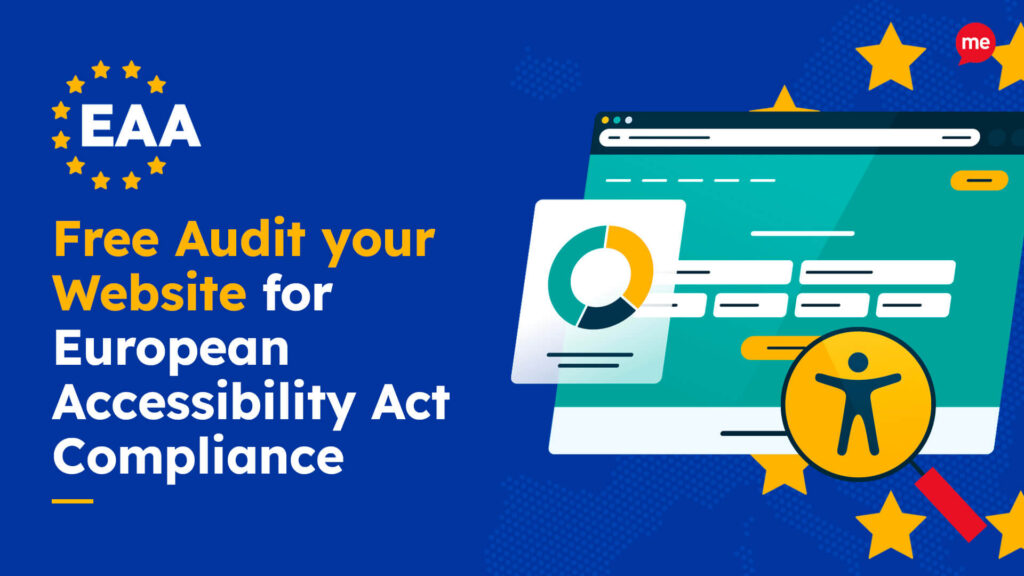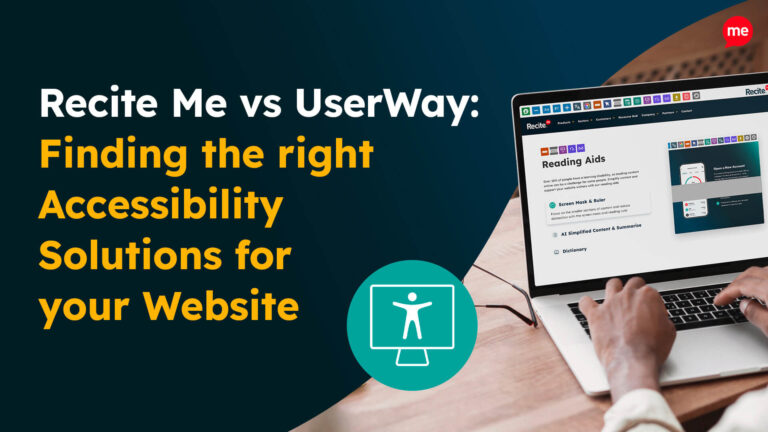Get Your Free European Accessibility Act Checklist
Download NowNavigating the world of accessibility can feel like a maze, but the European Accessibility Act (EAA) is here to guide the way by transforming how businesses across the European Union, including Ireland, make products and services accessible to everyone.
For businesses in Ireland, the European Accessibility Act isn’t just another regulation to tick off. It’s an opportunity to stand out by embracing inclusivity. So, whether you’re a tech startup or a retail giant, understanding the implications of the EAA in Ireland is key to staying ahead of the curve.
In this introduction to Irish accessibility legislation, we’ll break down what the EAA means for your organisation, how to ensure you’re compliant, and why getting it right is not just a legal necessity but a smart business move.
The European Accessibility Act (EAA) in Ireland
The European Accessibility Act is a common set of accessibility requirements shared across all EU member states, including Ireland. The Act encompasses a wide range of products and services, ensuring people with disabilities can fully participate in society. The EAA’s remit extends beyond making websites accessible. However, there is a particular focus on digital products and services.
Checking for EAA compliance is now easier than ever. At Recite Me, we offer a free website audit to spot any issues related to the European Accessibility Act and WCAG. You’ll get a clear action plan to help improve your website’s accessibility and meet EAA compliance.
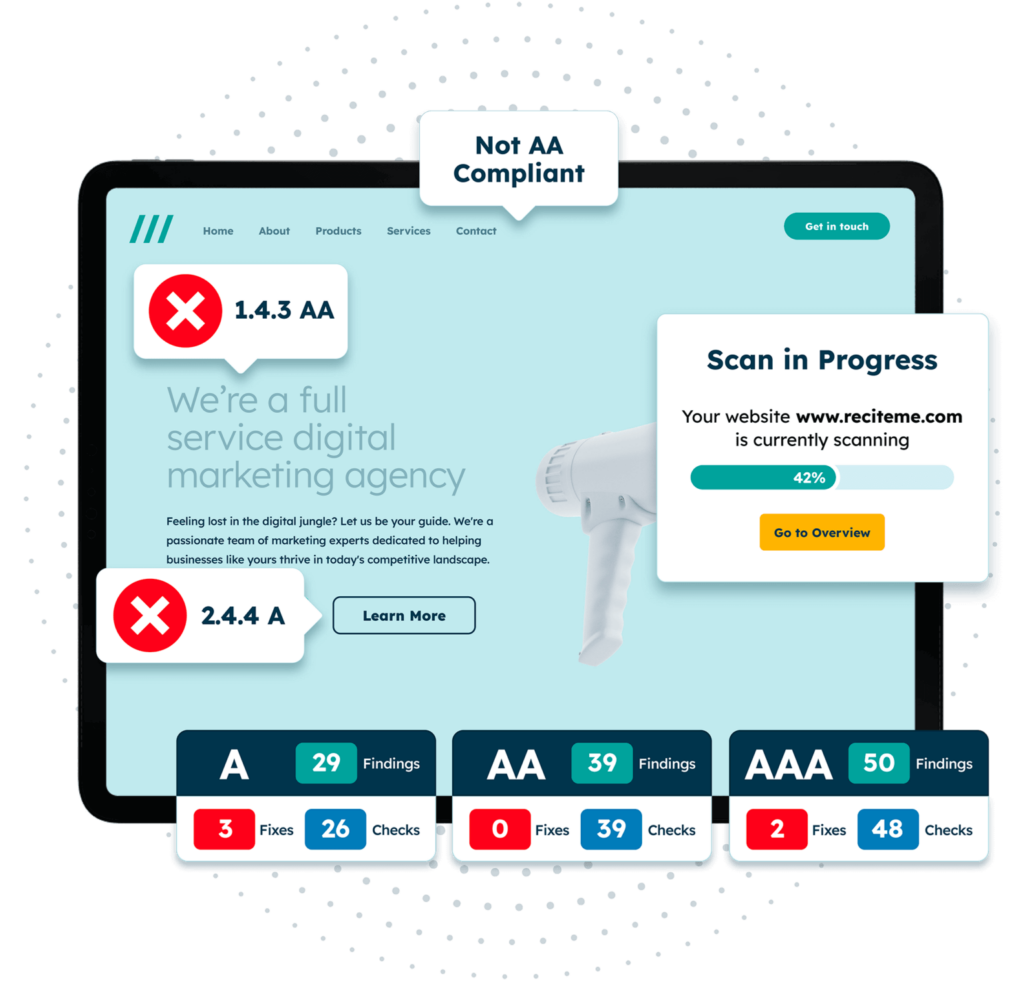
A Brief History of the EAA in Ireland
The EAA was officially adopted by the European Parliament on April 17, 2019. Member states were given until June 28, 2022, to transpose the directive into their national laws. Ireland, along with several other EU countries, failed to meet this deadline. However, the EAA was officially implemented into Irish law in 2023 under the European Union (Accessibility Requirements of Products and Services) Regulations.
The first EAA compliance deadline took effect on June 28, 2025, requiring all newly created digital content to be accessible. The next deadline, set for June 28, 2030, will mandate full accessibility for all digital content, both new and existing.
How Does the EAA Integrate with Existing Legislation in Ireland?
It’s essential to recognize that the EAA doesn’t exist in a vacuum. It builds on and complements other significant pieces of legislation. The National Disability Authority (NDA) has published a comprehensive list of disability legislation in Ireland. However, in terms of the EAA specifically, the most relevant are as follows:
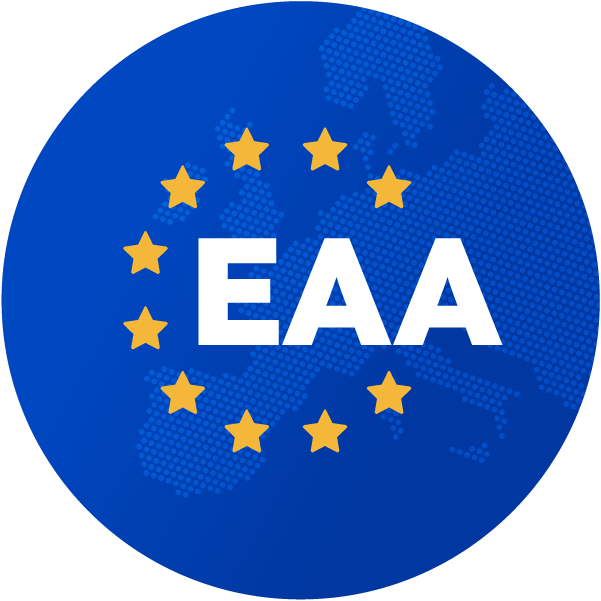
- The Disability Act (2005) sanctioned the NDA to establish a code of practice to ensure equity for Ireland’s disabled citizens. This code is based on the Web Content Accessibility Guidelines (WCAG) Level AA.
- The European Directive (EU) 2016/2102 targets the accessibility of public sector websites and mobile applications.
- EN 301 549 provides technical specifications for making ICT products and services accessible, again using WCAG as a foundational framework.
Which Businesses and Sectors Are Affected?
The EAA applies primarily to companies involved in producing, distributing, or providing products and services crucial for daily life. Therefore, the most affected sectors include, but are not limited to:
- Banking and finance
- E-commerce
- Transportation
- Telecommunications
However, it’s not only Irish businesses that are affected. Any entity operating in Ireland must comply. This is a significant consideration, as Ireland is a popular HQ location for many American and non-EU companies thanks to its low taxes, skilled workforce, economic stability, and convenient location for European market access.
EAA Compliance Requirements in Ireland
One of the most significant differences between the EAA and other pieces of accessibility legislation is the focus on specific products and services rather than types of discrimination.
But, what are the specific technologies that EAA requirements apply to? Here’s a comprehensive list:
- ICT products like computers, smartphones, tablets, and other digital devices.
- E-commerce websites and mobile applications.
- Self-service terminals including ATMs, ticketing machines, and check-in kiosks.
- Transport services like information and booking systems and ticketing platforms.
- E-books and other digital content.
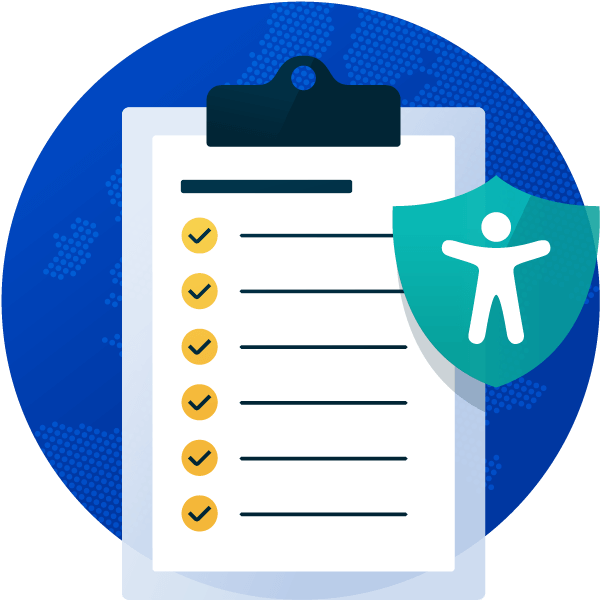
In the digital space, Irish companies should pay particular attention to the accessibility of their websites and mobile apps. This is where the integration of the EAA with EN 301 549 comes into play, as it provides specific guidelines for making digital products accessible.
What Standard of Compliance Should Businesses Aim For?
The EAA has yet to provide technical accessibility guidelines. Understandably, this can make it challenging for organisations to know what updates and improvements to make. However, it is anticipated that future updates will follow in the footsteps of EN 301 549 and the Disability Act in adopting WCAG Level AA as the go-to compliance standard. The most up-to-date version is WCAG 2.2, with WCAG 3.0 expected for publication soon.

The Risks of Non-Compliance with EAA Standards in Ireland
The EAA doesn’t set fines directly. Instead, that responsibility falls under the remit of each member state’s advisory organization. In Ireland’s case, that’s the National Disability Authority, and the potential repercussions are some of the most severe we’ve seen to date:
- Summary convictions carry a fine of up to €5,000 and/or imprisonment for up to 6 months.
- Indicted convictions carry a fine of up to €60,000 and/or imprisonment of up to 18 months.
Of course, there’s also a broad range of indirect risks stemming from non-compliance that could significantly impact an organisation’s market position. A few examples include:
- Market reach – Over 1 million people in Ireland have a disability. That equates to 22% of the national market.
- Negative PR – 52% of consumers consider brand values when making a purchase, and publicity around accessibility issues can spread quickly, leading to a loss of trust and credibility.
- Market leadership – Businesses that fall behind may struggle to keep pace with evolving standards and consumer expectations, ultimately resulting in the loss of competitive edge.
These examples specifically outline the business case for making accessibility changes. As not only is it the right thing to do, but it can also help provide a competitive edge to your business. Whether it be through unlocking new target markets or minimising the risks of non-compliance.
Make sure your website meets the European Accessibility Act with our easy-to-follow EAA checklist. It covers all the key steps to get compliant before the deadline and helps you avoid penalties. Get started today!
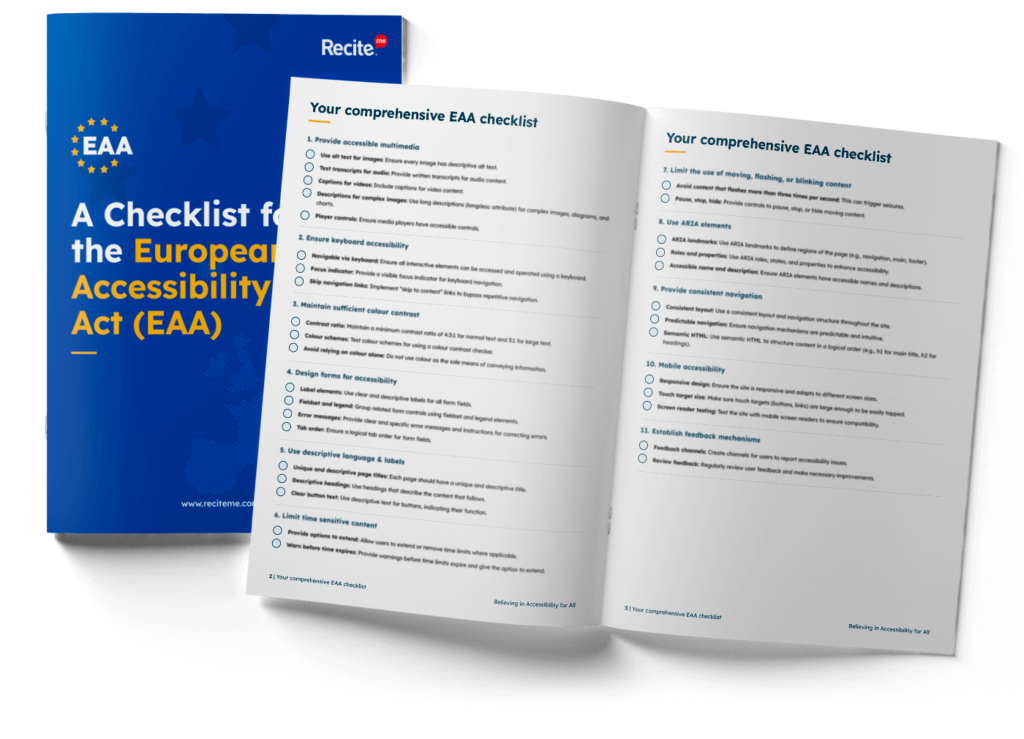
Steps to Achieve EAA Compliance in Ireland
Ensuring compliance with the EAA in Ireland might seem daunting. However, by taking a proactive and structured approach, businesses can meet the standards and benefit from the myriad opportunities accompanying enhanced accessibility best practices. Here’s a practical guide to help you get started.
1. Conduct an Accessibility Audit
You can’t take strides to improve the accessibility of your products and services if you don’t know where you stand now. That’s why a complete EAA compliance audit is essential.
Start by assessing your website, mobile apps, digital platforms, and physical products and services like self-service terminals and point-of-sale systems. For digital assets, tools like the Recite Me Accessibility Checker help by running 396 separate WCAG-based scans and generating a prioritised fix queue to ensure maximum impact in the shortest possible time frame.
2. Develop an Accessibility Strategy
Compliance is an ongoing commitment rather than a one-time task. Developing a comprehensive accessibility strategy is therefore essential for staying on track.
Start by setting clear goals and establishing a timeline, bearing in mind the 2030 deadline for full compliance. Then, ensure you have the necessary budget, tools, and personnel in place to implement your strategy. This might include hiring accessibility experts, utilizing the EAA checklist, investing in new technology, or creating a dedicated accessibility task force to oversee implementation.
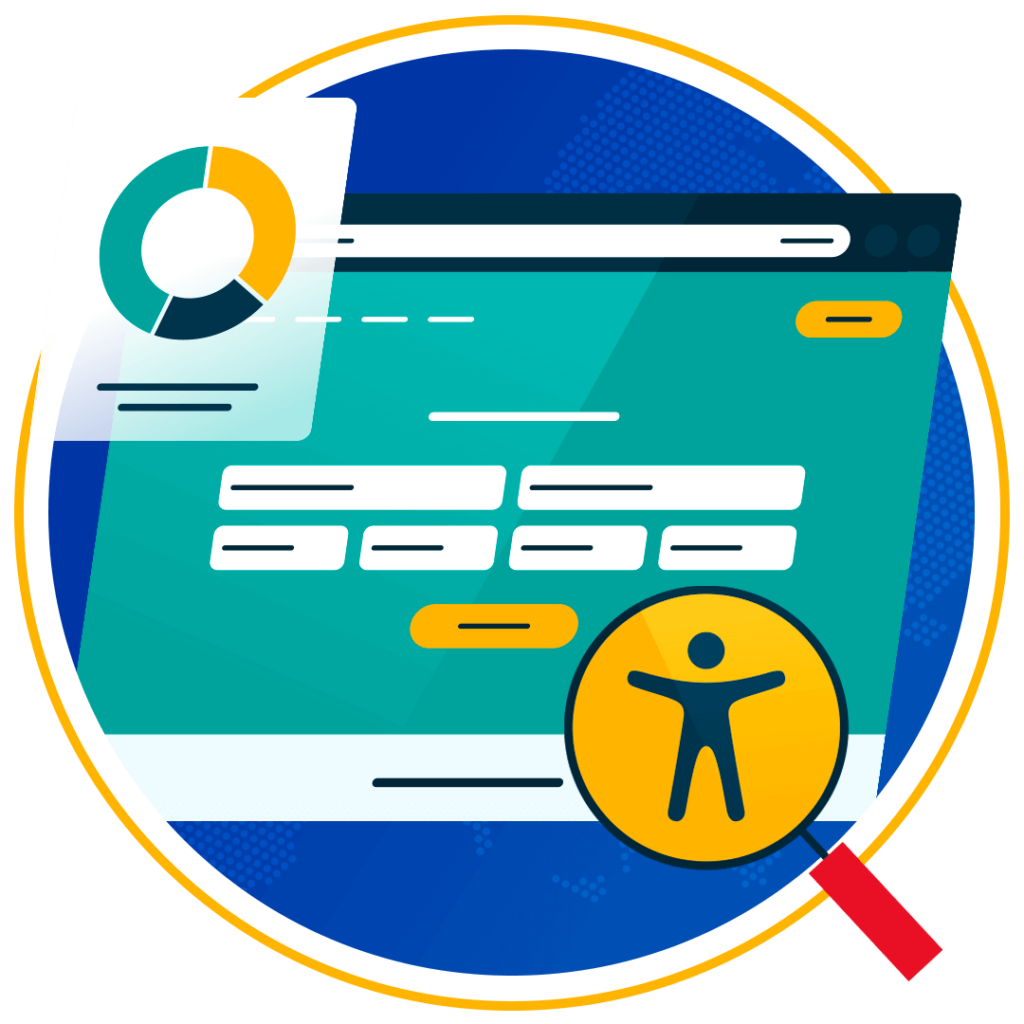
3. Implement Changes Across Your Business
Once you’ve audited your current state and developed a strategy, it’s time to start making changes.
Start with the most urgent updates first. Once fully compliant, you can add extra touches to become even more inclusive and set yourself apart as a market leader in accessibility. For example, installing the Recite Me Assistive Toolbar on your website takes inclusivity to the next level by allowing individual end users to make customisations for easier navigation and readability.

4. Test and Review Regularly
Regular testing and reviews are essential to maintain compliance and ensure that your products and services remain accessible as standards evolve.
Schedule regular accessibility audits to ensure your business continues to meet EAA standards. Seeking end-user feedback from customers, particularly those with disabilities, can also be invaluable in identifying areas for further improvement.
5. Train Your Team
Provide ample training and resources to ensure everyone on your team understands their role in maintaining EAA accessibility standards. This can help to educate website development teams, content creators, and product and service designers about accessibility best practices, with a particular focus on legally mandated requirements.
You can access our free European Accessibility Act course, which covers all bases relating to this act, and can be shared to fellow colleagues.
Need more help becoming EAA compliant?
The following resources are packed full of actionable tips and expert advice for making your digital content compliant with the European Accessibility Act:
Free EAA Compliance Training
Take the first step to European Accessibility compliance by completing our EAA training course.
Free EAA Compliance Guide
Ensure your organisation is meeting the necessary requirements for European Accessibility Act compliance.
Free EAA Audit of your Website
Download a free accessibility check of your website. This report will highlight any EAA non-compliance and how to fix it.

